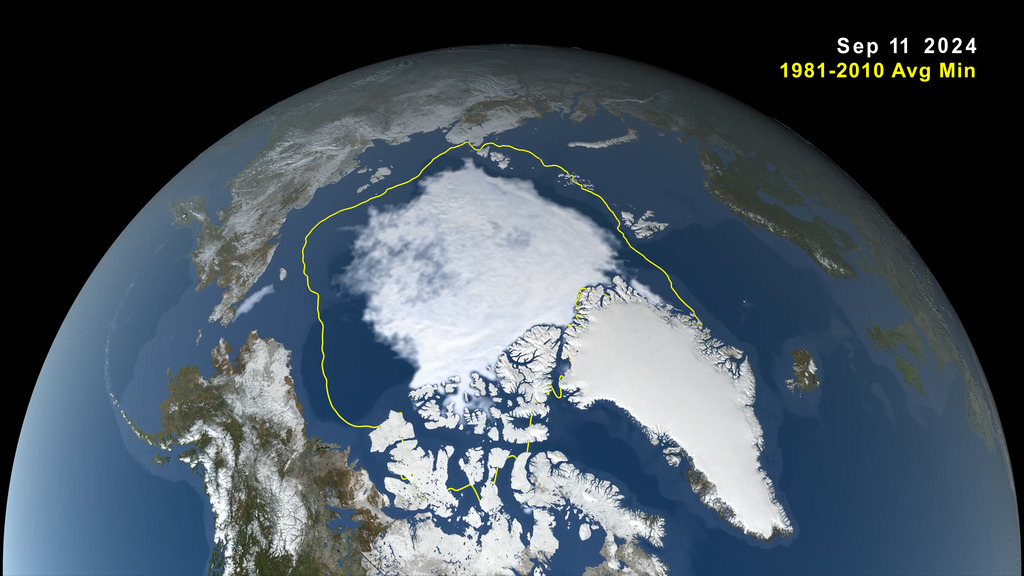[ad_1]
The agency also shared new state-of-the-art datasets that allow scientists to track Earth’s temperature for any month and region going back to 1880 with greater certainty.
August 2024 set a new monthly temperature record, capping Earth’s hottest summer since global records began in 1880, according to scientists at NASA’s Goddard Institute for Space Studies (GISS) in New York. The announcement comes as a new analysis upholds confidence in the agency’s nearly 145-year-old temperature record.
June, July, and August 2024 combined were about 0.2 degrees Fahrenheit (about 0.1 degrees Celsius) warmer globally than any other summer in NASA’s record — narrowly topping the record just set in 2023. Summer of 2024 was 2.25 F (1.25 C) warmer than the average summer between 1951 and 1980, and August alone was 2.34 F (1.3 C) warmer than average. June through August is considered meteorological summer in the Northern Hemisphere.
“Data from multiple record-keepers show that the warming of the past two years may be neck and neck, but it is well above anything seen in years prior, including strong El Niño years,” said Gavin Schmidt, director of GISS. “This is a clear indication of the ongoing human-driven warming of the climate.”
NASA assembles its temperature record, known as the GISS Surface Temperature Analysis (GISTEMP), from surface air temperature data acquired by tens of thousands of meteorological stations, as well as sea surface temperatures from ship- and buoy-based instruments. It also includes measurements from Antarctica. Analytical methods consider the varied spacing of temperature stations around the globe and urban heating effects that could skew the calculations.
The GISTEMP analysis calculates temperature anomalies rather than absolute temperature. A temperature anomaly shows how far the temperature has departed from the 1951 to 1980 base average.
The summer record comes as new research from scientists at the Colorado School of Mines, National Science Foundation, the National Atmospheric and Oceanic Administration (NOAA), and NASA further increases confidence in the agency’s global and regional temperature data.
“Our goal was to actually quantify how good of a temperature estimate we’re making for any given time or place,” said lead author Nathan Lenssen, a professor at the Colorado School of Mines and project scientist at the National Center for Atmospheric Research (NCAR).
The researchers affirmed that GISTEMP is correctly capturing rising surface temperatures on our planet and that Earth’s global temperature increase since the late 19th century — summer 2024 was about 2.7 F (1.51 C) warmer than the late 1800s — cannot be explained by any uncertainty or error in the data.
The authors built on previous work showing that NASA’s estimate of global mean temperature rise is likely accurate to within a tenth of a degree Fahrenheit in recent decades. For their latest analysis, Lenssen and colleagues examined the data for individual regions and for every month going back to 1880.
Lenssen and colleagues provided a rigorous accounting of statistical uncertainty within the GISTEMP record. Uncertainty in science is important to understand because we cannot take measurements everywhere. Knowing the strengths and limitations of observations helps scientists assess if they’re really seeing a shift or change in the world.
The study confirmed that one of the most significant sources of uncertainty in the GISTEMP record is localized changes around meteorological stations. For example, a previously rural station may report higher temperatures as asphalt and other heat-trapping urban surfaces develop around it. Spatial gaps between stations also contribute some uncertainty in the record. GISTEMP accounts for these gaps using estimates from the closest stations.
Previously, scientists using GISTEMP estimated historical temperatures using what’s known in statistics as a confidence interval — a range of values around a measurement, often read as a specific temperature plus or minus a few fractions of degrees. The new approach uses a method known as a statistical ensemble: a spread of the 200 most probable values. While a confidence interval represents a level of certainty around a single data point, an ensemble tries to capture the whole range of possibilities.
The distinction between the two methods is meaningful to scientists tracking how temperatures have changed, especially where there are spatial gaps. For example: Say GISTEMP contains thermometer readings from Denver in July 1900, and a researcher needs to estimate what conditions were 100 miles away. Instead of reporting the Denver temperature plus or minus a few degrees, the researcher can analyze scores of equally probable values for southern Colorado and communicate the uncertainty in their results.
Every year, NASA scientists use GISTEMP to provide an annual global temperature update, with 2023 ranking as the hottest year to date.
Other researchers affirmed this finding, including NOAA and the European Union’s Copernicus Climate Change Service. These institutions employ different, independent methods to assess Earth’s temperature. Copernicus, for instance, uses an advanced computer-generated approach known as reanalysis.
The records remain in broad agreement but can differ in some specific findings. Copernicus determined that July 2023 was Earth’s hottest month on record, for example, while NASA found July 2024 had a narrow edge. The new ensemble analysis has now shown that the difference between the two months is smaller than the uncertainties in the data. In other words, they are effectively tied for hottest. Within the larger historical record the new ensemble estimates for summer 2024 were likely 2.52-2.86 degrees F (1.40-1.59 degrees C) warmer than the late 19th century, while 2023 was likely 2.34-2.68 degrees F (1.30-1.49 degrees C) warmer.
[ad_2]
Source link





No comments! Be the first commenter?